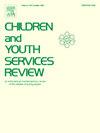Pathways of childhood poly-adversity to behavioral and mental health difficulties among adolescents: Resilience and self-concept
IF 2.4
2区 社会学
Q1 FAMILY STUDIES
引用次数: 0
Abstract
Childhood adversity, especially poly-adversity, heightens the risk of behavioral and emotional difficulties in adolescents. Existing evidence, rooted in various theoretical perspectives, indicates that resilience and self-concept are linked to these difficulties arising from childhood adversity. However, the precise interplay between resilience and self-concept in influencing the association between childhood poly-adversity and adolescent behavioral and emotional difficulties remains unclear. This study aimed to identify the pathways linking childhood poly-adversity to adolescent behavioral and emotional difficulties through resilience (family and individual) and self-concept (content domain and clarity) among Taiwanese adolescents. A convenience sample of 675 adolescent–parent/guardian pairs was recruited from 24 public junior high schools in six counties/cities in southern Taiwan. An anonymous questionnaire was used to collect data on adolescents’ self-concept, childhood adversity, resilience, behavioral and emotional difficulties, sociodemographics, and parents/guardians’ resilience. Results showed that adolescents with childhood poly-adversity had lower scores on family and individual resilience, content domains of self-concept, and self-concept clarity than their counterparts, particularly adolescents with high poly-adversity. The indirect effects of childhood poly-adversity on adolescent behavioral and emotional difficulties were through resilience and self-concept. The sequential pathways via resilience and self-concept for low and high childhood poly-adversity were similar. Findings suggest that resilience and self-concept may be underlying mechanisms linking childhood adversity to adolescent behavioral and emotional difficulties. Strategies targeting strengthening resilience for both adolescents and their families, as well as fostering positive self-concept in adolescents, may have clinical implications.
求助全文
约1分钟内获得全文
求助全文
来源期刊

Children and Youth Services Review
Multiple-
CiteScore
6.30
自引率
6.10%
发文量
303
期刊介绍:
Children and Youth Services Review is an interdisciplinary forum for critical scholarship regarding service programs for children and youth. The journal will publish full-length articles, current research and policy notes, and book reviews.
 求助内容:
求助内容: 应助结果提醒方式:
应助结果提醒方式:


